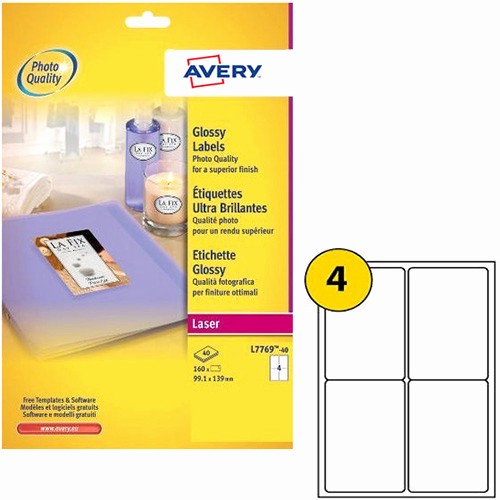

- #Indesign data merge avery labels how to
- #Indesign data merge avery labels update
#Indesign data merge avery labels how to
If you'd like to learn how to do that, click here to read the tutorial. The best way to create a table in InDesign is by linking an Excel spreadsheet into InDesign. However, for the tables you see in my document, I have to import them after the data merge. Of course, you can insert placeholders into a table and InDesign will replace them with your data. Unfortunately, with data merge you can import only textual data and link to images. It has the name of the product, its picture, a short description, the price, and a barcode.

We need to create a prototype, in InDesign, of the layout we want to use in the data merge process. So, If you are looking for a way to create several business cards in just a few seconds, you should definitely read that post.
#Indesign data merge avery labels update
Update 2020: I recently wrote a new tutorial on how to make several business cards using InDesign Data Merge. When should you use data merge?ĭata merge is great when you have to lay out a document (or part of a document) that has a "prototype example" (repetitive layout) that needs to be repeated in a grid or one record per page with different data. However, she doesn't talk about data merge with images, so for that (and because this guide goes more in depth), I invite you to keep reading even after you've seen the video. It's great content, explained very well, and Teela’s voice is calm and clear. She explains in eight minutes how to create a certificate using data merge. If you prefer a video guide, see this video by Teela Cunningham. Read further in the tutorial to create documents with a structure-layout similar to these:
Run a preview to make sure of the result. Add the placeholders to the prototype design in your document. Select the data source in InDesign using the Data Merge panel. Create a prototype in an InDesign document. Create the data source file-in the first row, name the fields (use in front of the field name for images). In this tutorial, I'll show you the basics and then I'll highlight possible issues you might encounter and their solutions, so that you can master this feature in no time. So before jumping in and trying it out yourself, I’d suggest reading the whole tutorial and learning first about the limitations and errors that you may face later. Using data merge is not hard at all, but you might need a few attempts to get it right. You may need to make adjustments to leading and/or line spacing to make your label text flow properly across the labels.With data merge you can easily paginate text and images in InDesign in a matter of seconds by reading an external data source file in. Each label should have an address (or whatever your text was) in it. Paste the contents of your clipboard (CTRL+V), replacing the dummy text. In the InDesign template, using the text tool, click in the top left label and select all (CTRL+A). Copy the entire list of label text to your clipboard. If you have four-row labels, don't leave a space between the text for each label. If you have three-row labels, leave an empty line between the text for each label. To put your own addresses (or other text) into the text frames, simply follow this procedure: It has 30 linked text frames in the right spot for each of the 30 labels, with dummy text. This is the layer that I think you should use. The text frames all have a dummy 3 line address in them, with no borders or fill. This layer has individual (non-linked) text frames in the right spot for each of the 30 labels. no borders or fill), have a small margin designated, and are set to center text vertically. The text frames are invisible until you click on them (i.e. This layer has an individual (non-linked) text frame in the right spot for each of the 30 labels. If you hide the other layers, you can use this layer as a guide for placement of your own text elements or objects. This layer contains only the horizontal guides that divide the sheet into 10 even sections. 
In InDesign, simply use the File > Open command to open the template file, and it will open as a new InDesign document.







 0 kommentar(er)
0 kommentar(er)
